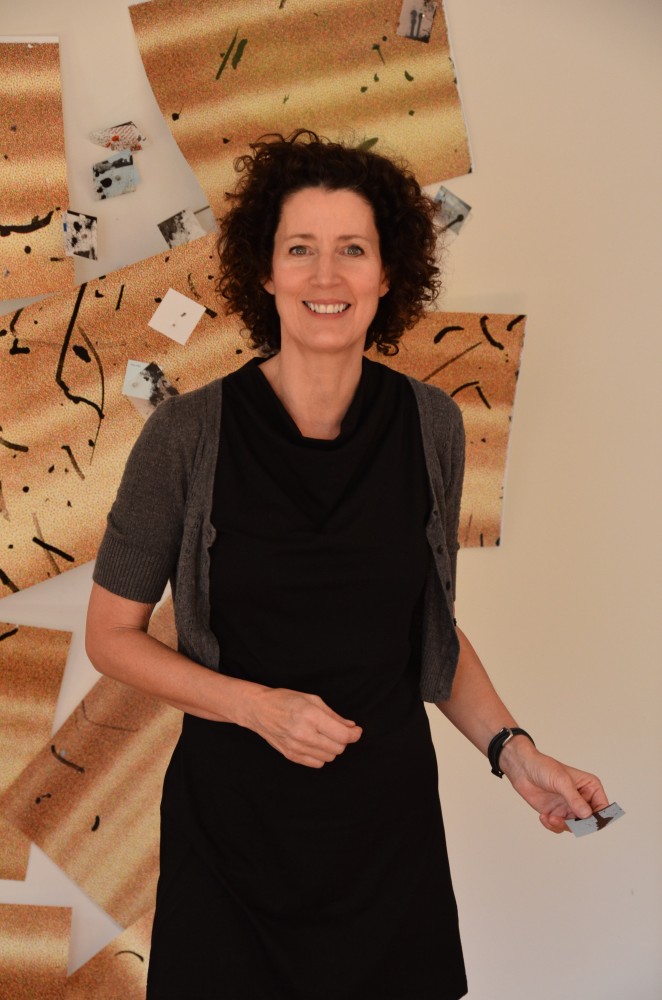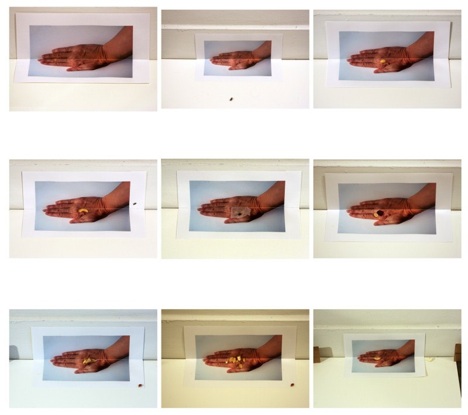From January 21 to April 8th, the UO art faculty members will be showing their work in The Long Now, an exhibition at the Jordan Schnitzer Museum of Art from January 20 to April 8 in Eugene. Selected works by six art faculty members will be shown at the White Box in Portland from January 24 to March 24. To highlight the artists behind the art, I’m having conversations with several of the faculty in the show to hear more about their practice.
This conversation is with Carla Bengtson. She is an Associate Professor in Art and an Associate Member of the Environmental Studies Program at the University of Oregon. Her work will be shown in Eugene, as well as at the White Box in Portland. Previously to coming to the UO, she taught at Yale University, Connecticut College, Wesleyan University, and was Head Curator of the John Slade Ely House, Center for Contemporary Art in New Haven, Connecticut. She holds a BFA from Tyler School of Art, an MFA from Yale School of Art, and was a two-time participant in the Whitney Independent Study Program.
Dave Amos, A&AA writer: Why do you work with insects and ants?
Carla Bengtson: I work with a few different organisms; ants are one of them. Ants were my first experiment in making art with other species. That happened because I was going to the Amazon every year and staying at research stations as part of a larger question about human-environment interactions. Ants kept trying to get into my work as I would go out into the field to draw and write so I decided to welcome that opportunity. I started working with ants in collaboration with a biologist and our first drawings were with arboreal gliding ants. They are ants that live in trees and when they fall from trees they are able to direct their descent like flying squirrels do, so they can find a scent trail and get back to their nest.

I discovered this by accident. We were playing with an ant on a piece of paper and it would always move to the same corner. So I would move the paper to try to understand what this behavior was about. Through a process of interaction I got this beautiful spiral pattern. As it turns out the ant wasn’t just going to a particular corner or a particular compass point, but it was going toward the light, which is how they locate the trees when they fall out of the trees. So the pattern that resulted evidenced something of my curiosity and the ant’s inclinations.
DA: One of your pieces is a result of spreading paper under a tree. Could you tell me more about that?
CB: The following year I went down with some Dutch Boy paint samples, which reminded me of minimalist paintings — little ready made minimalist paintings that Home Depot was selling. I did a series where ants did these gestural abstractions on the paint samples, and then I did several things with them. I based a series of human-scaled paintings on them, which was an attempt to see if I could understand something of the ants’ lifeworld, but through the process of translation I also added something of my own nature and culture. The paintings exist somewhere between my culture and their nature, or between my nature and their culture, depending on how you look at it.
In a following iteration I blew the original up, took it back down to the Amazon, reinstalled it, and had the ants draw on it as a colony. That piece, along with site documents and a video showing the ants beginning to explore the print, are in the JSMA exhibition.


DA: How do they make their drawings?
CB: It’s just ink. It’s non-toxic water-based ink. I just splatter it in their path. They’re busy getting their leaves.
DA: Before you had been to the Amazon had this human-insect interaction always been an interest?
CB: My interest in environmental issues is what took me to the Amazon. When you’re down there, you become very aware that the human perspective is only one among many. So I became more and more curious to see what I might understand of nonhuman culture. I’m also curious to see what other species make of human culture. I did another piece where I cut up and laid out a large print over the leaf cutter nest site. At first the ants rejected the pieces and cleared them from the nest site. Then they started collecting them. I’ve got this video showing that moment of decision. The next year I did it again but I tore the print into pieces that resembled leaves and this time they took them from me right away. And then, not only that, but I had these big chunks left that they started cutting themselves and started collecting. They just collected virtually the whole print. My work in the Portland show is based on that interaction. Both pieces begin with site-responsive actions or interventions and then they take different, but related, forms in the gallery setting.
DA: What insight are you looking for when you make these pieces? What’s fascinating to you about the interactions you’re having with these creatures?
CB: I’m trying to find a place between nature and culture. I’m trying to think them together, rather than in opposition to one another, which is how we’ve been trained. And I’m trying to see what can be seen and what can be said between species. We have completely different physical scales, temporal scales, perceptual apparatus, and cultures. Ants are interesting to me because they have such highly developed, bottom up cultures, while we have highly developed top down cultures. I’m hoping to develop a two-way interaction, not just something I impose on them or something they perform for me, but a two-way dialogue that shifts my perspective.
DA: Is there another species you want to work with?
CB: I am working on a video project with ground squirrels. I’ve done a piece with a studio mouse (below). I’m doing a piece with monkeys and language, called “Starting Over”, in the Amazon.

DA: There seems to be another area of your work that doesn’t directly involve insects. “Lick” (below) is a beautiful piece. How did you make it?
CB: It’s all about this question of human/environment and human/non-human interaction. The question is what falls out when you try to engage other species in the environment. In other words, what can you not access? That’s the falling out. The spilling over is what comes back; the unexpected insights that come back from that attempt.

”Lick” is about the paint performing it’s own materiality. I’ve painted for years and years and these ant projects have spilled over into how I think about paint. I’m interested in embodiments — my body, other species’ bodies, the body of the material of the paint, and the body of the image. In this piece, I really want to extend the gesture of the paint to show what it wants to do, how it flows, how you can move it. To take that gesture and prolong it and move it through a series of panels so it ripples through without being a big, fat heroic abstract expressionist brush gesture. And the stripe, the other spillover that came into this painting from these Dutch Boy paint samples was when I started to paint them I had to find a technique to show this blown up striping effect. I developed a tool that would do that, so that’s how I developed the striping gesture on “Lick.”
DA: Your primary medium is paint, but you expand outward to serve your mission. Is that move recent?
CB: I was a painter for 25 or more years. The thing that moved me from that strict painting practice was my increasing interest in environmental issues and becoming an associate member of environmental studies and co-teaching with people in other disciplines and just having certain experiences that made me want to address these other concerns more explicitly than I could with abstract painting. That’s what led me to into new forms of making.
DA: Why are you in Eugene?
CB: Eugene had the same draw that brought me to this point in my work. I was living on the east coast, and I wanted to understand more about how I was constituted as both a thinker and an embodied perceiver. I was getting a lot of resources in terms of thinking about art, but I needed to directly engage nature more and try to understand that aspect of my experience. That desire is what caused me to apply to UO. It’s also what took me beyond UO to the Amazon and other places.
DA: Who or what are your influences?
CB: Artists that are interesting to me at the moment are Katharina Grosse and Shannon Ebner and her work with language. In terms of thinkers, a German by the name of Jan Verwoert is really interesting to me. He’s a contemporary theorist. There’s also a biologist from the 19th-20th century, Jakob von Uexküll, who developed theories about animals being at the center of their own perceptual bubbles. He has some really intriguing ideas about understanding other animals as sensing subjects and not just objects.
DA: Is that what your art is trying to get at?
CB: Yes, right. The alterity, or otherness, of other species, but also their agency. So the idea around the studio mouse piece is to show both my desire to interact with the mouse, but also its agency in refusing to cooperate.

DA: Tell me more about your circular pieces (like above).
CB: The circle shape originally came from a recognition that when you see in nature, you see in more of a circular or elliptical pattern. You don’t see rectangles, frames around your perception. It was that, but those works were also inspired by an investigation of this encounter with the world. Before you name things, what is that pre-apprehension moment? You’re always inevitably at the center of your own experience. So that’s why both the outer frame is closer to the way you see, and why a lot of them also have oculi. You’re always moving through the world, which is circulating around and opening up before you.